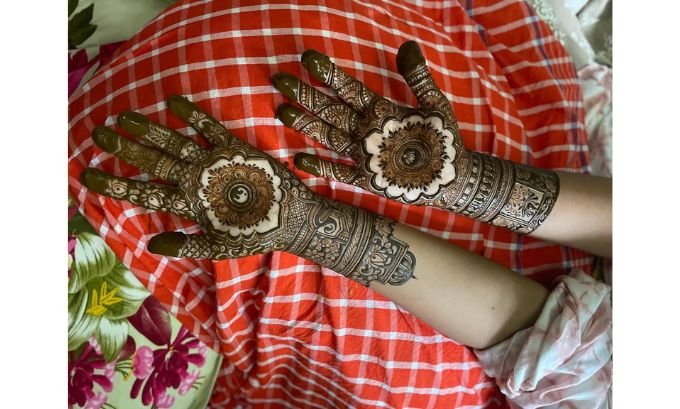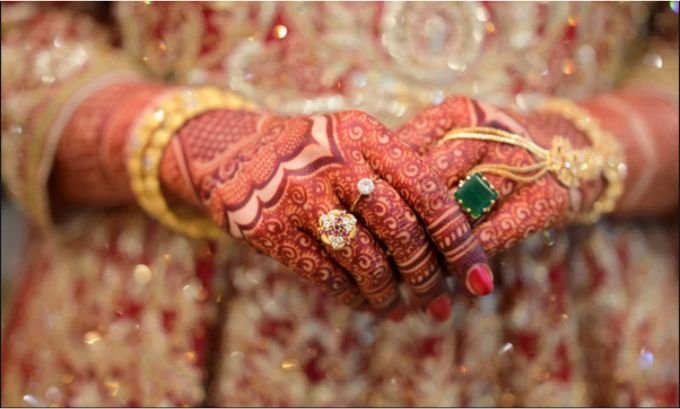Mehndi is a timeless form of body art that uses a paste made from the henna plant to create stunning, temporary patterns on the skin. For centuries, this practice has been a cornerstone of cultural celebrations across South Asia, the Middle East, and North Africa. The intricate designs are not just for decoration; they carry deep symbolic meaning, representing beauty, joy, luck, and tradition.
Whether you’re a bride-to-be preparing for your special day, getting ready for a festive celebration, or simply captivated by the beauty of henna art, this guide will walk you through everything you need to know. We’ll explore the different types of mehndi designs, popular motifs, application techniques, and the latest trends shaping this beautiful art form.
Types of Mehndi Designs
Mehndi art is incredibly diverse, with various regional styles offering unique aesthetics. While artists often blend elements from different traditions, understanding the core characteristics of each style can help you choose the perfect design for your occasion.
Traditional Indian Designs
Indian mehndi is known for its complexity and detail. These designs often cover the entire hand, extending from the fingertips to the elbow, with little skin left showing. Key features include:
- Intricate Patterns: Fine lines, paisleys, lace-like details, and floral motifs are meticulously woven together.
- Symbolic Motifs: It’s common to see peacocks (symbolizing beauty), elephants (representing good luck), and bride and groom figures hidden within the design.
- Mandalas: A large, circular pattern, often placed in the center of the palm, represents the universe and is a common focal point.
Arabic Designs
Arabic mehndi originated in the Middle East and is characterized by its bold, flowing patterns. Unlike the dense coverage of Indian designs, Arabic styles often feature more open space, creating a striking contrast against the skin.
- Flowing Lines: The designs typically consist of large floral and vine patterns that trail diagonally across the hands and feet.
- Bold Outlines: The motifs are less intricate than Indian designs, with thicker lines and more emphasis on shading within the shapes.
- Modern Feel: The negative space makes Arabic designs feel contemporary and elegant, which is why they are popular worldwide.
Moroccan Designs
Hailing from North Africa, Moroccan henna designs are distinctly geometric and symmetrical. These patterns often tell a story and are believed to offer protection from evil.
- Geometric Shapes: You’ll find diamonds, triangles, zigzags, and dots arranged in linear patterns.
- Symbolic Elements: Motifs like the khamsa (a hand shape) and eye symbols are frequently incorporated to ward off the evil eye.
- Unisex Appeal: The tribal and abstract nature of Moroccan designs makes them popular among both men and women.
Pakistani Designs
Pakistani mehndi beautifully merges the intricacy of Indian art with the boldness of Arabic styles. The result is a design that is both detailed and dramatic.
- Fusion of Styles: You’ll often see the dense, fine-line patterns of Indian mehndi combined with the prominent floral and leafy vines of Arabic designs.
- Balanced Look: These designs are elaborate and ornate, often featuring a blend of geometric, floral, and paisley elements. They provide a balanced look that is rich in detail without being overwhelming.

Modern and Contemporary Designs
As mehndi gains global popularity, artists are pushing creative boundaries. Modern designs are all about personalization and self-expression.
- Minimalism: Simple, delicate patterns like a single vine on a finger, a small mandala on the back of the hand, or minimalist wristbands are very trendy.
- Fusion Styles: Many people opt for a fusion of different traditional styles or incorporate elements inspired by Western tattoos, such as arrows, quotes, or celestial symbols.
- Themed Motifs: It’s also become popular to create themed designs, like incorporating skylines, favorite animals, or personal symbols into the henna.
Popular Motifs and Their Meanings
Certain symbols and patterns appear frequently in mehndi designs across different cultures. Here are some of the most popular motifs and what they represent:
- Florals and Vines: Flowers, especially the lotus, symbolize beauty, purity, and new beginnings. Vines and leaves represent vitality, strength, and longevity.
- Paisleys: This classic teardrop-shaped motif is thought to represent fertility and good luck. It’s an incredibly versatile element found in many traditional designs.
- Mandalas: These intricate circular patterns symbolize the universe, harmony, and balance. They often serve as the central focus of a design, drawing the eye inward.
- Peacocks and Birds: Peacocks are a symbol of beauty, grace, and nobility. Other birds, like parrots and sparrows, often represent freedom and messengers of love.
- Geometric Shapes: Lines, dots, and geometric patterns found in Moroccan and tribal designs can symbolize protection, stability, and order.
How to Apply Mehndi
Creating a beautiful mehndi design requires skill and patience. While professional artists are recommended for intricate bridal work, you can try applying simpler designs at home.
Application Techniques
- Cone Application: This is the most common method today. Henna paste is filled into a small, cone-shaped tube (often made of plastic or paper), which allows for precise control when drawing fine lines and details.
- Stencils: For those who are new to mehndi or want a perfect design quickly, stencils are a great option. You simply place the adhesive stencil on the skin and apply the henna paste over it.
- Brushes and Applicators: Some artists use fine-tipped brushes or other tools like jacquard bottles to create unique textures and artistic variations.

Getting the Best Color
After the paste is applied, let it dry completely, which can take several hours. The longer the paste stays on your skin, the darker the stain will be. To enhance the color, many people apply a mixture of lemon juice and sugar over the dried paste. Once you scrape off the dried henna (avoid washing it with water initially), the stain will first appear orange and will darken to a rich, reddish-brown over the next 24-48 hours.
When to Wear Mehndi
Mehndi is an integral part of many celebrations and ceremonies.
- Weddings: Bridal mehndi is perhaps the most elaborate, often covering the bride’s hands and feet in intricate patterns. It’s a key part of pre-wedding rituals.
- Festivals: Mehndi is widely applied during major festivals like Eid, Diwali, and Karva Chauth to signify joy and celebration.
- Cultural Ceremonies: It’s also common during baby showers, engagements, and other significant family events.
- Fashion: Today, many people wear mehndi simply as a form of temporary body art and self-expression, much like a temporary tattoo.
Modern Mehndi Trends
While rooted in tradition, mehndi is constantly evolving. Some of the latest trends include:
- Glitter and Colored Mehndi: For a modern twist, artists sometimes add cosmetic-grade glitter or colored dyes to the henna paste for a dazzling, temporary effect.
- White Henna: Though not made from the henna plant, “white henna” is a popular body adhesive that creates a beautiful, lace-like design on the skin. It’s perfect for a temporary, eye-catching look.
- Fusion with Jewelry: Some designs are created to mimic jewelry, like hand harnesses, rings, and anklets, blending the art of mehndi with fashion accessories.
An Ever-Evolving Art Form
Mehndi is a beautiful practice that connects us to rich cultural histories while allowing for modern self-expression. It’s an art form that transforms the body into a canvas, telling stories of celebration, beauty, and tradition. As it continues to evolve with fashion and global trends, mehndi retains its core symbolic value, making it a cherished art form for generations past, present, and future.


